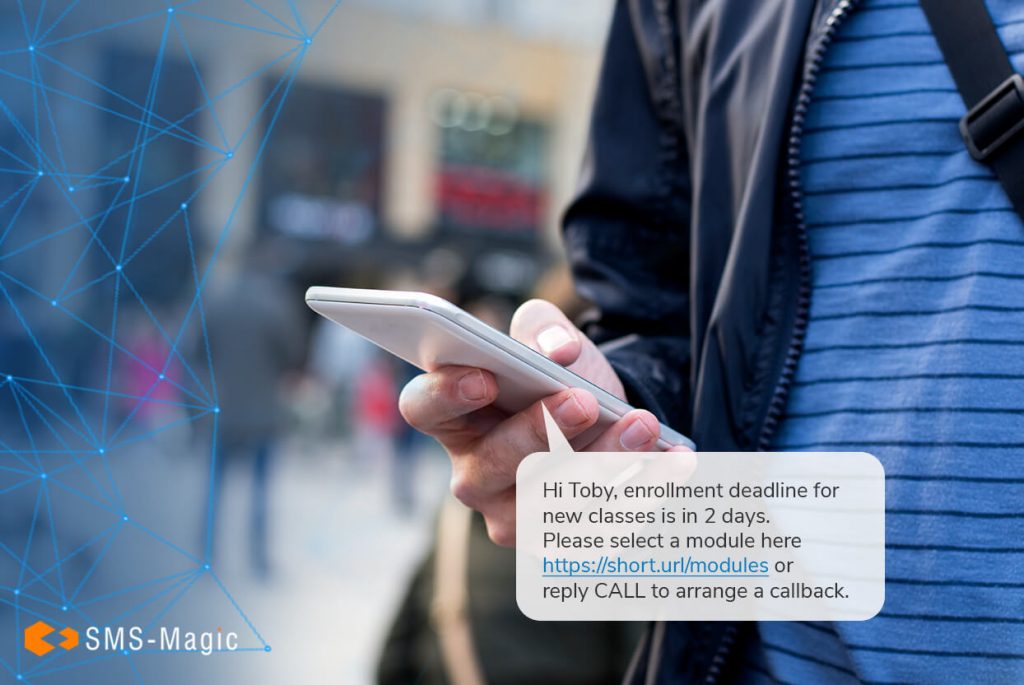
All it takes is 2 easy steps
If you're a winner, we will send you $100 Amazon gift card at Dreamforce!


If you are reaching out to college students through their phones, your messages are likely to be welcomed and read. After all, industry research shows that 60 percent of text messages are read within five minutes of popping up.
And delivering a targeted message can really boost your responses, particularly with adults under 35. Millennials and those in Generation Z consider their phones to be their personal space, and they’re particular about allowing someone new inside. But if you have great information that’s useful to them right away, they are ready to engage.
In a college recruitment setting, helpful information might include:
The key is to make sure your messages are important, helpful and address the recipient’s immediate concerns. Have you already launched a messaging program? Or are you considering one? Here are seven tips to help guide a successful messaging program.

Most colleges and universities can legally text potential students without jumping through too many hoops. That said, it’s a good idea to allow potential students to opt out of your messaging program or to include language during your first contact that gives you permission to send them messages. If they do opt out, make sure your technology will allow you to exclude them from bulk distributions. And if multiple departments choose to message, be sure students can opt out of individual departments, as well as all messages.
It’s tempting to use a new platform for everything, but it’s better to start slowly. Consider limiting who can message students. And although students generally find informational texts helpful, they don’t necessarily want personal messages from people they don’t know. If you are careful about the frequency of your distribution, you can increase the importance of each message that you send.
Make it easy for students to identify that the text is coming from your college or university. It helps promote your brand and increases the student’s comfort with the information you’re sending.

Reminder messages are really helpful, and students often come to rely on the updates they provide. If a deadline is coming soon, send a message with a reminder and links to more information. Make it easy for students to access the materials they need to meet the deadline.
You already know that, at any given time, students are at different points in the enrollment funnel. So you’ll want to craft messages that speak to students where they are in the process. Early on, students may not need to know when the housing deadline is, but they may want to know what the dorm rooms look like.
You are already protecting student privacy in everything else you do, but you’ll want to be especially sensitive to privacy on messaging platforms. Personally identifiable information should be restricted to one-on-one communications with high levels of encryption. You can deploy a system like that, but mass emails should never contain personal information.

Every message should have a CTA. What do you want the student to do? A CTA may be a link to more information, but it can also be a reminder that action is needed now. Make good use of a message’s potential.
We hope that these tips will help you design a program that quickly meets and exceeds your recruitment goals. We are excited about how college and universities can use a messaging platform to reach students where they are.
If you have questions about the technology or want to discuss how SMS-Magic might be able to help you, please don’t hesitate to contact us.
Stay updated on business text messaging
Text MAGIC for Demo to
USA: 36343
AUS: (61)409564682
UK & ROW: +44 7860017509
Email: care@sms-magic.com